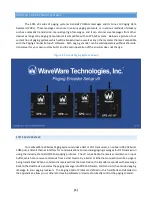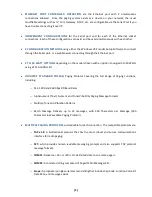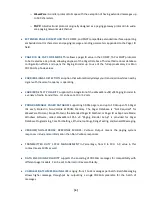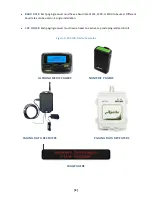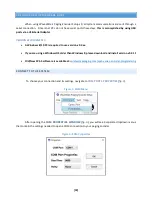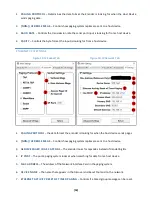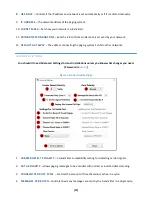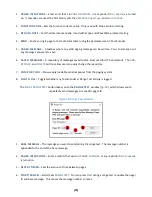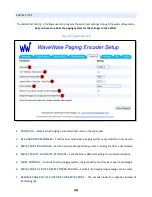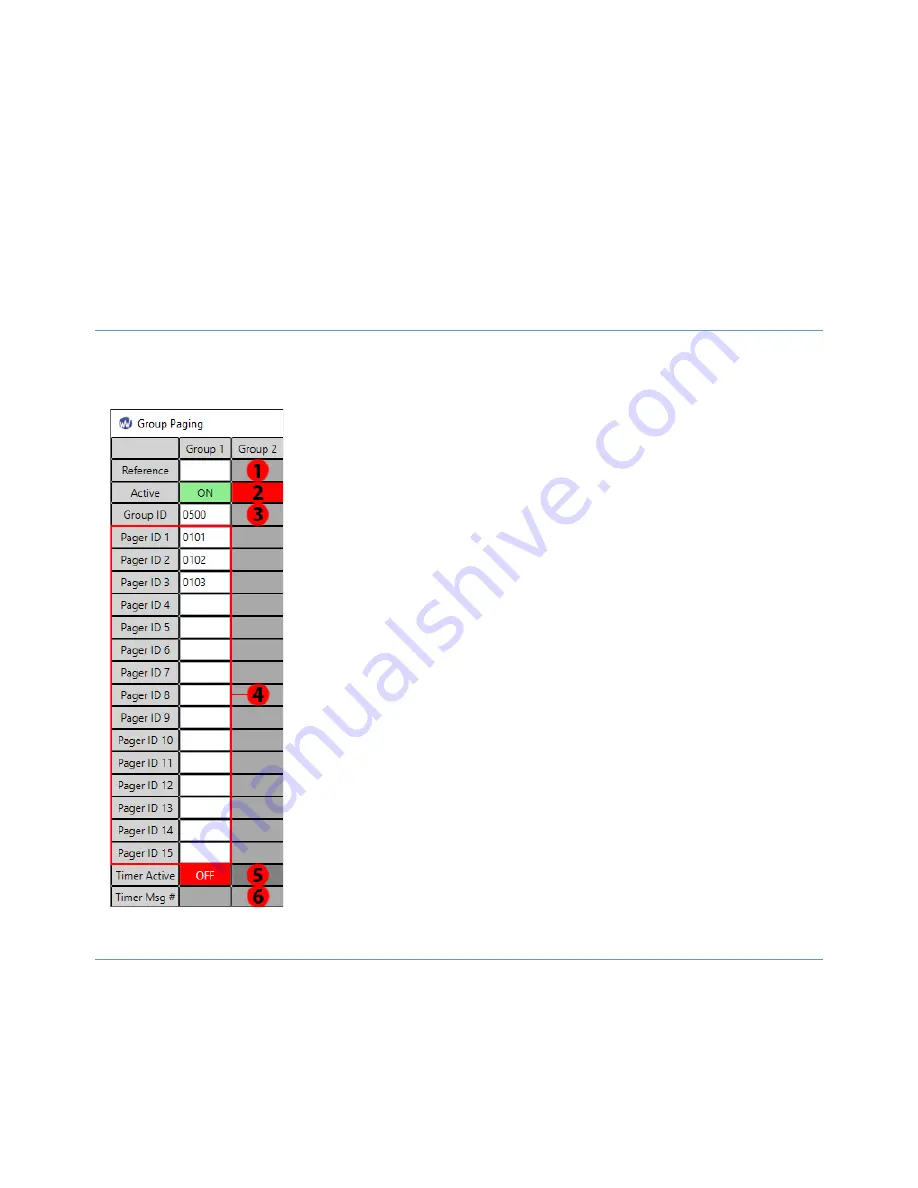
[14]
7.
PAGER TYPE
– Changes the message type pagers receive from this Pager Family.
8.
FUNCTION CODE
– Sets the function code used by a pager when it receives a page from this Pager
Family. Some pagers refer to function codes as letters. In this case:
1=A, 2=B, 3=C
,
and
4=D
.
9.
DATA RATE
– Sets the transmission rate in this Pager Family. Choices are:
512, 1200,
and
2400
.
10.
PREFIX MSG
– Adds a prepended message from
CANNED MSGS
to pages from this Pager Family
.
11.
SUFFIX MSG
– Adds an appended message from
CANNED MSGS
to pages from this Pager Family.
2. GROUP PAGING
Figure 11: Group Paging Column
The
GROUP PAGING
Window (
fig. 11
) displays the current database’s pager
IDs bound together by a common group ID.
1.
REFERENCE
– A small tag to identify what the group is for.
2.
ACTIVE
– Controls if the group is checked when paging data is received from
the Host Device.
3.
GROUP ID
– The ID that triggers a group page.
It must be an ID not used
in any Pager Family.
4.
PAGER ID
S
– A list of up to 15 Pager IDs in the paging group.
It must be an
ID in a Pager Family.
5.
TIMER ACTIVE
- This will send a page
every 2 minutes
to the pagers listed
in that Group unless the Host Device issues a Reset Command.
6.
TIMER MSG #
- The message,
created in Canned Msgs,
that pages to the
associated Paging Group when the timer’s 2 minutes have passed.
3. CANNED MSGS
The
CANNED MSGS. WINDOW
(
fig. 12
) is very simple with only text prompts for up to 15 messages
programmed to the encoder
for use as a prefix, a suffix, or as a timed message.
The messages will save if
the
CLOSE
button is used instead of the
OK
button.



